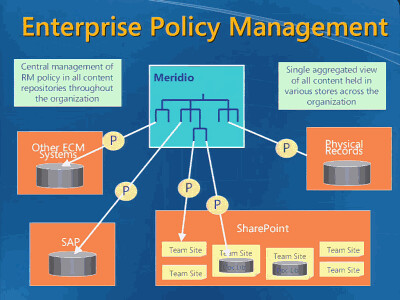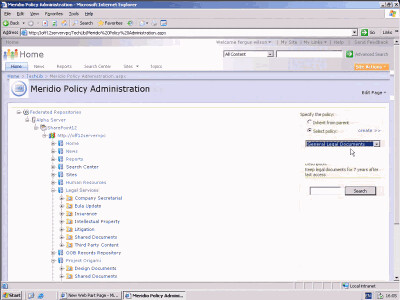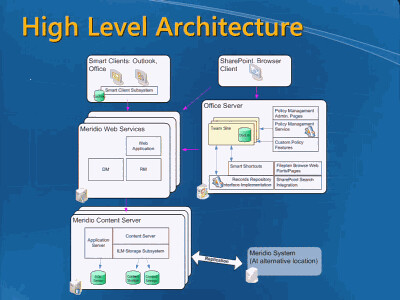- A focused, cohesive vision
- Clarity of ownership and accountability
- Decisiveness
Thursday, December 07, 2006
Who Likes Peanut Butter Anyway?
I never liked peanut butter, so that may be the reason why Brad Garlinghouse's memo resonnated with me. His Peanut Butter Manifesto gives us a lesson in leadership. It is the responsibility of senior management to lead the march for change and to clearly articulate why it is happening. I found Brad's manifesto effective at doing so. Ironically enough, it would probably resonnate true with quite a few organizations were you to replace the product names. Organizations often tend to spread peanut butter when they are reluctant to refocus their business and align it with clearly articulated strategic direction. To be successuful, every organization should have:
Wednesday, December 06, 2006
Why Kodak’s Strategy Will Work…
The November 27th issue of Business week had a very interesting article about Kodak and some of the tough choices and strategy shifts it had to undertake over the past 10 years. Over the past ten years, Kodak had to re-invent itself from a film company to a print company to a digital technology provider illustrated by its recent deal with Motorola. So what's behind Kodak's transformation? First, despite the resistance to change that any strategy shift entails, is the recognition of a true identity and business purpose. Kodak is an image company and as such, it is able to adjust, though painfully, through the value chain of the image business.
In a sense, this is a classical illustration of Clayton Christensen's "Law of Conservation of Attractive Profits". The law of conservation of attractive profits states that in the value chain there is a requisite juxtaposition of modular and interdependent commoditization, that exists in order to optimize the performance of what is not good enough. When modularity and commoditization cause attractive profits to disappear at one stage in the value chain, the opportunity to earn attractive profits with proprietary products will usually emerge at an adjacent stage (quote from The Innovator's Solution). This happened to the computer industry (see Intel) and is happening to the image industry. Kodak's bet that the growth of digital photography will happen in mobile phone and that profits margins for sensor chips will be twice those of the digital camera business aligns with the above law. Kodak is identifying new revenue opportunity in the image value chain and aggressively pursuing the shift in the value chain. That's true leadership and it will pay off. Good luck Mr Perez.
In a sense, this is a classical illustration of Clayton Christensen's "Law of Conservation of Attractive Profits". The law of conservation of attractive profits states that in the value chain there is a requisite juxtaposition of modular and interdependent commoditization, that exists in order to optimize the performance of what is not good enough. When modularity and commoditization cause attractive profits to disappear at one stage in the value chain, the opportunity to earn attractive profits with proprietary products will usually emerge at an adjacent stage (quote from The Innovator's Solution). This happened to the computer industry (see Intel) and is happening to the image industry. Kodak's bet that the growth of digital photography will happen in mobile phone and that profits margins for sensor chips will be twice those of the digital camera business aligns with the above law. Kodak is identifying new revenue opportunity in the image value chain and aggressively pursuing the shift in the value chain. That's true leadership and it will pay off. Good luck Mr Perez.
Saturday, December 02, 2006
Meridio Records Management with SharePoint
I came across this interesting presentation from Meridio a couple days ago. Meridio positions itself as the leading worldwide provider of enterprise Document and Records Management (eDRM) software, engineered for Microsoft .NET platforms.
As a result, Meridio is naturally embracing SharePoint and identifying both how to position itself and provide value-added to SharePoint 2007. Meridio recognizes one of the weaknesses of the SharePoint architecture with the risk of proliferation of a large number of sites which in return makes the SharePoint infrastructure difficult to manage (if not unmanageable) for large organizations. SharePoint's approach to Records Management relies heavily on the site archictecture as well. See the Web Seminar with AIIM and Microsoft: Records Management in Microsoft Office SharePoint Server 2007 for a good overview.
Meridio is positioning itself as an enterprise policy management solution for SharePoint 2007 which can act as an enterprise records management repository for SharePoint and legacy systems as well.


Here is a screenshot of Meridio’s policy management user interface in a SharePoint environment.

Meridio's architecture seems to start positioning Meridio as a potential virtual records management repository for the enterprise which is undoubtedly the right direction for them to remain relevant.

It is an interesting and promising extension to SharePoint. Remains to be seen how successful they will be now that SharePoint is positioning itself as a platform that can provide basic Records Management capabilities.
As a result, Meridio is naturally embracing SharePoint and identifying both how to position itself and provide value-added to SharePoint 2007. Meridio recognizes one of the weaknesses of the SharePoint architecture with the risk of proliferation of a large number of sites which in return makes the SharePoint infrastructure difficult to manage (if not unmanageable) for large organizations. SharePoint's approach to Records Management relies heavily on the site archictecture as well. See the Web Seminar with AIIM and Microsoft: Records Management in Microsoft Office SharePoint Server 2007 for a good overview.
Meridio is positioning itself as an enterprise policy management solution for SharePoint 2007 which can act as an enterprise records management repository for SharePoint and legacy systems as well.


Here is a screenshot of Meridio’s policy management user interface in a SharePoint environment.

Meridio's architecture seems to start positioning Meridio as a potential virtual records management repository for the enterprise which is undoubtedly the right direction for them to remain relevant.

It is an interesting and promising extension to SharePoint. Remains to be seen how successful they will be now that SharePoint is positioning itself as a platform that can provide basic Records Management capabilities.
Subscribe to:
Posts (Atom)